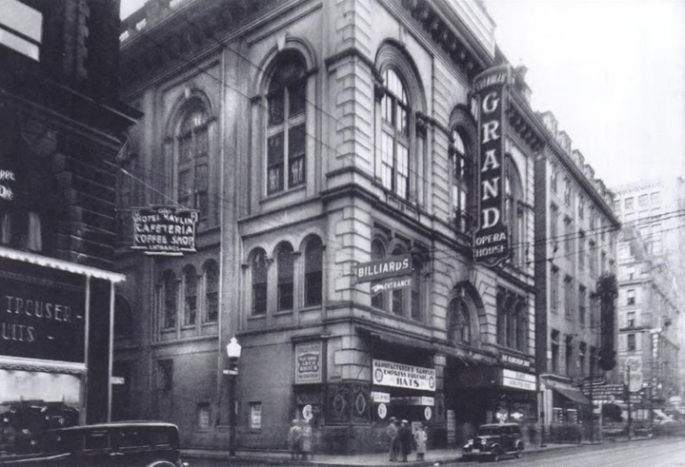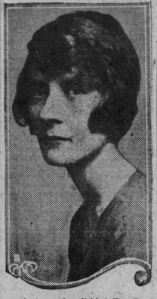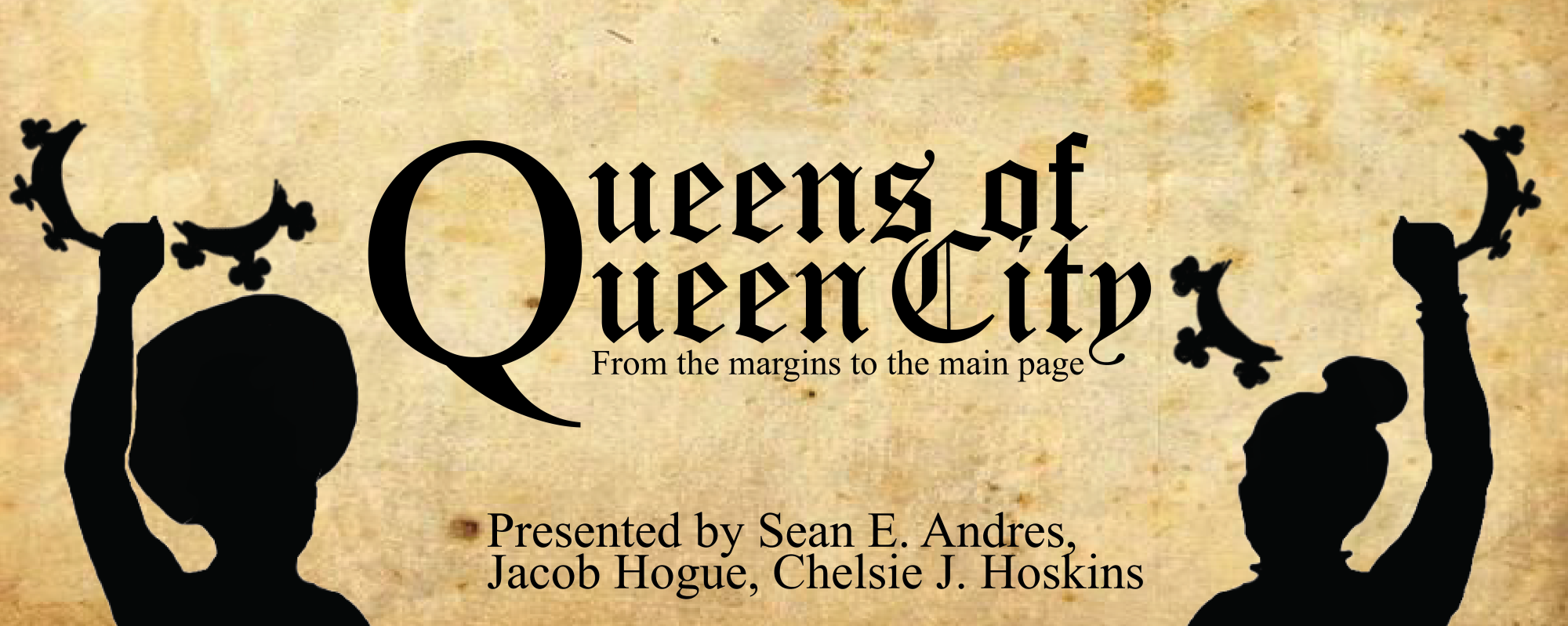Millicent Lilian “Babs” Entwistle was destined for fame. But the media and Hollywood had a more sinister plan for her to become famous. “The woman who goes hunting for fame sometimes has to play a dangerous game. The pathway that leads to achievement, for woman, is beset with many pitfalls. If a woman can follow it to the end she may win everything that her heart desires—provided that she has luck; if misfortune comes to her anywhere along the way she is apt to find that her happiness has vanished.” Indeed, the Cincinnati Enquirer (6 Nov. 1932) may have been right about women trying to make it in a man’s world here, but the writer mostly reported inaccuracies and embellished the drama when covering the death of the woman who became known as Peg Entwistle.

By Sean E. Andres
Born to English stage actors Robert and Emily Stevenson Entwistle on 5 February 1908 in Emily parents’ home in Margam, Neath County, Port Talbot, Wales, Millicent Lillian “Babs” Entwistle was bound for the stage herself. The family returned home to West Kensington. Robert’s brother Charles Harold Entwistle emigrated to New York to begin working on Broadway but returned occasionally. When Babs was two, Robert divorced Emily. Later, reports would say that her mother had died. Whether that was Peg’s spin, it’s hard to say, though Peg continued to see her mother’s family. That same year, Babs had her first stage experience, watching her father and uncle perform Julius Caesar for the new King George V at his coronation.
Peg Comes to America
Back in New York, Charles met actress Bertha Jane Ross during the production of Hobson’s Choice. Jane, as she went by, was from Elmwood Place, a Cincinnati suburb, and was the daughter of H. Milton and Matilda Ross. The two married in June 1912 and moved to Santa Monica, CA. In the summer of 1913, they visited the Entwistles back in England, and Babs immediately took to Jane. Soon Babs’s family came back with them to New York. Jane had introduced Robert to her sister Lauretta, and the entire family had traveled back and forth to Cincinnati over the next few years. Babs fell in love Lauretta, and so did her father.

In 1914, Robert married Lauretta while summering in Michigan. Indeed 1914 was the year that things really started to change for Babs. When Babs saw Laurette Taylor in Peg O’ My Heart on Broadway in 1914, she was so taken that she walked away from the Cort Theater insisting her name now be Peg.
Her life soon became a whirlwind of change. In September 1917, Lauretta gave birth to Peg’s little brother Milton. The following year, Peg joined the American Junior Red Cross after the Spanish flu tore through Broadway. Everyone was quarantining or fulfilling war duties. Then Peg got a new brother Bobby in 1919. When the world returned back to a somewhat normal semblance in 1920, twelve-year-old Peg played the title role in a school production of Peter Pan. The family likely returned to Cincinnati that year when Lauretta’s grandmother Lauretta Ross died.
Love and Loss
But that feeling of being loved and having a family that loved each other wasn’t to last long. Peg’s stepmother died from bacterial meningitis in April 1921. Robert, Peg, Milton, and Bobby immediately boarded a train for Cincinnati with her body, which they buried in the Ross family plot the next day. Peg’s family stayed in Cincinnati with the Rosses for a few weeks as hey grieved. Peg had taken up the role as mother to the boys now, squelching her dreams of being a Broadway star.
Over a year later in New York, Peg nearly lost her father in a hit-and-run. It was at this moment, when Jane came from Cincinnati, that she saw the effect taking on the role of mother took on Peg and brought the boys back to Cincinnati. After recovering fairly well, Robert died on 19 December 1922 of a hemorrhage from complications derived from the injury. On 22 December, they buried him beside Lauretta. They returned to New York briefly to pack up and return to Cincinnati to live with the Ross family under the legal care of Charles and Jane, who gave up their lives as it were, for the children. This certainly wasn’t ideal for Peg; she didn’t care for her step-grandmother Matilda, a woman of traditional values.
On New Year’s Day 1923, Jane took Bobby to the hospital for a case of mastoiditis. The doctors recommended a warmer climate, so rather than returning to New York as intended, Charles moved the family to L.A. to a little house beneath the flashing Hollywoodland sign (now with the “land” dropped), where Jane’s sisters Helen Rees and Marguerite also lived.
Outside of schooling, Peg filled her time with riding horses, visiting the beach with friends, reading plays and scripts with Jane, and seeing plays with Jane. Eventually, Peg stepped up her practice with the Hollywood Theater Community School at 16, where the instructor Constance Cornell told Jane that Peg was brilliant and was “excellent at mimicking and diction.”
Peg was an “attractive, soft-spoken young woman who came to love the still camera with an affectionate, gentle gaze,” Zerek writes in his biography of her. “Her Mona Lisa smile was simple, offering expressions of polite sentiment.” People were mesmerized by Peg’s hair (the color of a shaved almond), her deep blue eyes, her intelligence, and her spirit.
With her uncle pulling some strings, Peg moved to New York in June of 1925 to fulfill her dreams on Broadway, being accepted into the New York Theater Guild. Almost immediately, however, Peg was recruited as a new upcoming talent to launch Henry and Frances Jewett’s new Boston Repertory theater and troop, impressing Henry at Walter Hampden’s birthday party with her charm, her knowledge of theater history, and already knowing, by heart, 21 of 22 plays of the company’s repertoire. She withdrew from the New York Theater Guild and joined the Repertory.
Peg on Stage
Peg’s theatrical debut was in Hamlet on 10 October 1925 with Ethel Barrymore, the most famous actress at the time.
Peg starred as Hedvig in Henrik Ibsen’s The Wild Duck in Boston. In the audience one night in January 1926 was a girl the same age as her, seventeen years old. That girl saw herself in Peg and relating to the character of Hedvig. That girl was Bette Davis. Hedvig tragically commits suicide at the end, and Davis had never been more sure that she’d become an actor now. Three years later, Davis played Hedvig as she climbed to the top of Hollywood.

Peg had enjoyed a few years of wonderful parts under the direction of Henry Jewett, struggling in the spotlight while dealing with an abusive husband Robert Lee Keith, whom she divorced in 1929 after two years of marriage. Peg returned to Cincinnati at the Erlanger Grand Opera House, playing a minor role in Sherlock Holmes, starring William Gillette, starting Monday, 28 April 1930.
When she returned to Hollywood that year, producers were offering her once-in-a-lifetime opportunities. But the theater was always had been her passion. She declined them to continue the stage life. The following year, she returned to Cincinnati at an even bigger venue: Music Hall. Peg played the part of Charlotte B. Evans, a minor role of the main character John Roberts’s fleeting love interest, in She Means Business, beginning 20 February 1931 in Music Hall. Ernest Glendinning played John Roberts. But eight of her plays that year, no matter how good she was, were failures.
Peg would not return to Cincinnati until January 1933.

The failures forced her to reconsider her opportunities. She was broke, had betrayed on of her best friends and roommate, and then moved back to Hollywood. Hollywood once promised her opportunity, but it became more difficult than she had anticipated. She was shortlisted for many major films and was considered for the part of Sydney Fairfield in A Bill of Divorcement, a role that ultimately went to Katherine Hepburn. She was contracted for the studio RKO, which trained her to be the face of their company. Now earning a steady income, she moved out of her guardians’ home and into her own apartment nearby.
Peg was cast as androcidal lesbian Hazel Clay Cousins in RKO’s Thirteen Women screen adaptation. However, most her character’s controversial storyline was cut in edits, unfortunately, and it made the film a mess. They were, though, scenes that never should have been filmed in the first place, per the script supervisor’s requests and federal regulations on same-sex representation screen. After filming ended, Peg was cut from RKO’s payroll and could no longer afford to live in her apartment. She returned to live with her family, which forced Jane’s best friend Lucretia “Crete” Craig out of the house, which Peg felt terrible about. Meanwhile, her ex-husband and his new wife had been successful in the theater business.
Peg’s Goodbye
On Friday, 16 September 1932, Peg bid her family farewell, announcing that she was off to purchase and book and then meet up with friends. But she never returned home. Sunday evening, a jogger found her jacket, shoes, and purse with a note in it beneath the H of the Hollywoodland sign and called the police. When the police arrived on scene below the H, it took them an hour to find the mangled mess of Peg Entwistle’s body. The note had said, “I am afraid I am a coward. If I could only have done this long ago I could have saved a lot of pain,” signed “P.E.” She had climbed the rigorous terrain up to the Hollywoodland, climbed a ladder left by a repairman, and fell from the H to a gruesome death below, shattering her pelvis and rolling farther down the craggy side. She had been one of thirteen suicides in Los Angeles that weekend.

Jane was worried that no one had heard from Jane when conducting her own investigations. On Monday, the family found out by reading the papers and knew it had been their Babs. Newspapers, unsympathetic in their flare for the drama, made a mockery of her. Headlines read:
- “Curtain” falls here (Cincinnati Enquirer, 22 Sep. 1932)
- Suicide star (Delphos Daily Herald, 23 Sep. 1932)
- Disappointed, ends her life (Fremont Messenger, 21 Sep. 1932)
- “I’m a coward” (Cincinnati Enquirer, 6 Nov. 1932)
And the copy is no better.
“Deprived of the screen fame for which she had hoped, Lillian (Peg) Entwistle, beautiful stage actress, brought her life to a dramatic close by heaping to death from the letter ‘H’ of the 50-foot electric sign ‘Hollywoodland’, which graces the hills of the film colony. She was only 24.” (Fremont Messenger, 21 Sep. 1932)
“Peg Entwhistle, 24, also known as Lillian Millicent, wrote finis to her life in a dramatic plunge from the famous Hollywoodland sign near her home in Hollywood.” (Akron Beacon Journal, 21 Sep. 1932)
The following day, the family held an Episcopal service at the chapel in Hollywood Cemetery. Afterwards, Peg was cremated. Money was tight, so the family could not return with her ashes to Cincinnati just yet, not until January, when the family held a private burial on the fifth for her in the Ross family plot with her father and stepmother in the Glendale’s Oak Hill Cemetery.
Peg’s Legacy
Peg’s suicide was one that inspired many artists over the past decades (nearly a century now). Most notably, Peg’s death is the reason why the main characters in the Ryan Murphy alternative history drama Hollywood (streaming now on Netflix) strive to enact change in Tinsel Town’s culture.
Do read Peg Entwistle and the Hollywood Sign Suicide by James Zeruk, Jr., for an in-depth story entwining the stories of Peg and the sign itself, with insight and photos from the Entwistle family.
If you or a loved one have suicidal thoughts, please call 1-800-273-8255. Someone is there to help.
Take the Peg Entwistle Tour of Cincinnati
- Take a tour or see a show at Music Hall, where Peg performed.
- You can see where the Ross home once stood in Elmwood at 503 Walnut St., Elmwood Place 45216. It is a private residence, so please be respectful. The home has since been razed, and the home that exists there now was built in 1949.
- The home of Willis A. Ross, Peg’s step-great uncle is located at 621 Greenup, Covington, KY 41011. I currently cannot tell if Peg ever visited there, but it could be likely. This is also a private residence. Please be respectful of that.
- Visit her grave at Oak Hill Cemetery, Section 12, Lot 27, Grave 10.
Bibliography
- Zeruk Jr., James. Peg Entwistle and the Hollywood Sign Suicide, McFarland & Company, Inc., 2014, Kindle Edition.
- Newspapers.com
- Cincinnati and Covington Directories via The Public Library of Cincinnati & Hamilton County
- Sanborn Maps via The Public Library of Cincinnati & Hamilton County
- Singer, Allen J. Stepping Out in Cincinnati: Queen City Entertainment 1900-1960, Arcadia Publishing, 2005.

she is my grate grandmother
LikeLiked by 1 person